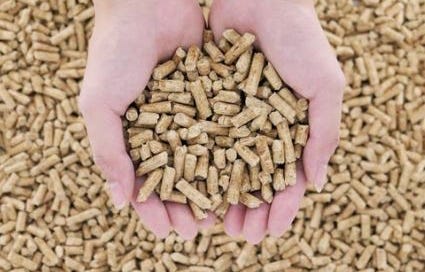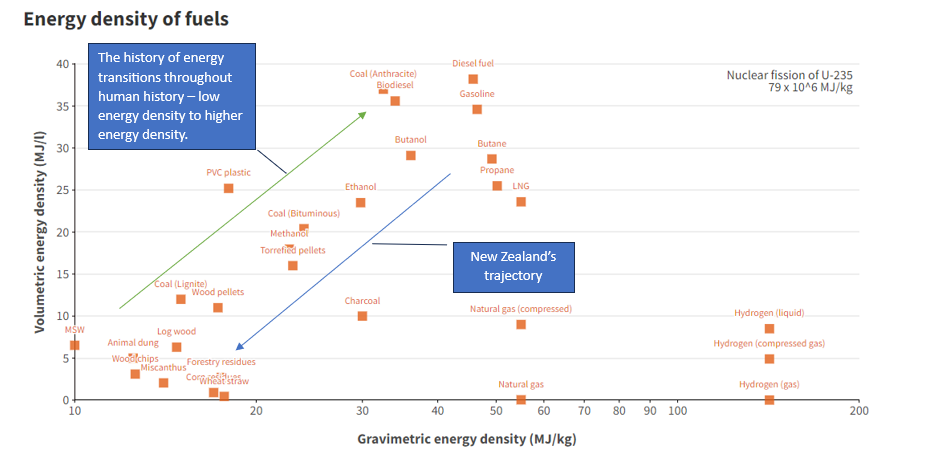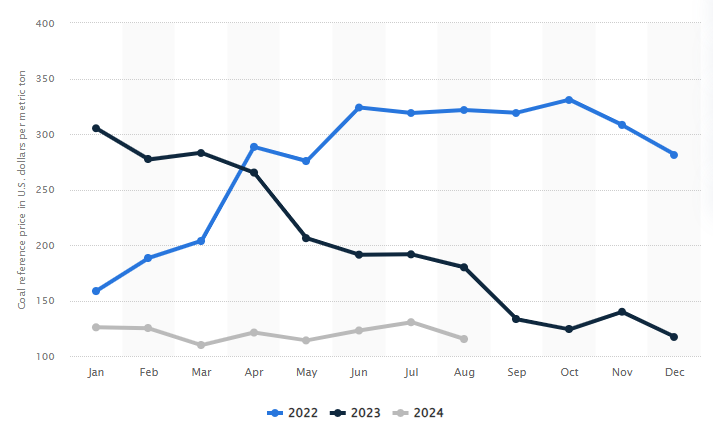NZ Energy Transition Pathway - Gas, to Coal, to Wood
NZ is fully committed to descending the energy density gradient. What's next? Whale blubber?
Genesis Energy own and operate New Zealand’s coal fired power plant at Huntly. Huntly is a key piece of infrastructure within the NZ electricity generation network, providing large scale firming capacity that is critical for dry year security of supply.
A couple of news articles this week from Genesis provide some key data points plotting New Zealand’s energy transition trajectory.
Links to the articles, increased coal stockpile, biomass development manager.
The key take aways from these two articles are:
Genesis needs to increase its coal stockpile from 350,000 Tonnes to 500,000 Tonnes to ensure they have the fuel reserves necessary to get us through the coming winter if it doesn’t rain much.
Genesis sees New Zealand’s solution to the intermittency of wind, solar and dry winters as coming from wood pellets, rather than coal, fired in their boilers for firming capacity.
Summary - We are transitioning from gas, to coal, to wood.
There is a lot to unpack here and quite a lot of mental gymnastics are required for some of this to make any sense. So, let’s try and work our way through it all.
Physics:
Physics is always the best, and if we are honest the only way, to assess an energy system.
Specifically, things fall into two fundamental categories, thermodynamically viable or a thermodynamic absurdity.
This assessment should always be done using the widest possible boundary analysis to avoid sweeping various inconvenient aspects of the full system under the carpet. As an example, we import EV’s to New Zealand, and conveniently don’t have to account for the emissions and impact during manufacture. A wider boundary of analysis would produce a different understanding of the EV’s impact.
My initial thoughts on this topic are that New Zealand seems fully committed to descending the energy density gradient, which is the opposite direction of travel to that taken by humanity throughout history. Our quality of life has improved as we’ve moved up the energy gradient.
This is in essence choosing a fuel with less embedded energy, and increased entropy (losses of useful energy). This lowers the overall productivity of the energy system.
Using the widest possible boundary analysis, we must consider the energy required to recover, transport and process forestry residues in order to produce wood pellets.
The EROI (energy return on energy investment) of industrial wood pallets is hard to determine from open-source data but is in the range of 8:1 to 12:1 depending on where they are sourced and how they manufactured (torrefied or not*).
The EROI of coal is typically 30:1 or higher. For context about the EROI of various fuel sources, here is an article I previously wrote on the topic.
By both mass and volume coal has around twice the energy density of industrial wood pellets. The deeper into this I dive the more I lean towards the thermodynamic absurdity end of the spectrum.
Economics:
This aspect is where things get a bit more nuanced.
On face value this will make the fuel per unit of electricity cost higher.
Finding some historical longer term price data for wood pellets was tricky as they are not in an open global commodity market to the same extent as coal. Eventually, I did manage to track down some indicative data in a webinar from one of the energy trading groups out of Singapore.
Interestingly given that wood pellets require coal or gas for process heat in manufacturing, their price is quite closely linked to coal over time. Additionally, you will still need coal or gas to make wood pellets at industrial scale.
Indonesian coal (which Genesis buys for Huntly) is trading at around USD $115 / metric tonne , while industrial wood pellets in Europe are at about USD $175 / metric tonne.
(see below for the price of Indonesian coal and the price of wood pellets in Europe for price comparisons)
However, given the mass energy density of wood pellets is about half that of coal we would need to procure twice as much wood pellets to produce the same amount of electricity. When we double the inputs, this results in an increased price of electricity out of Huntly by roughly 300%.
When we consider the wider boundary analysis, the 300% estimated increase in electricity prices resulting from using wood pellets doesn’t factor in the logistics costs of wood pellets, which is considerably higher than coal.
At half the energy density by volume, both storage and transport requirements double with wood pellets. Further complicating the issue is the fact that wood pellets also need to be kept dry as they swell when wet (and lose useful energy content, like wet firewood). They also need ventilation as they oxidize they produce carbon monoxide and carbon dioxide in enclosed spaces which could be both toxic and/or flammable. So, there will be significant infrastructure upgrades required to facilitate wood pellet use.
If you want to know more about the logistics considerations associated with wood pellets this shipping cargo handbook is interesting. Specifically interesting to me was the dust (explosive potential) and handling fragility.
Domestic Industry & Balance of Trade
Where the economic picture gets more complicated, and I have to admit this is outside of my wheelhouse, is the balance of trade considerations and domestic economic activity.
The plan is to use domestic forestry residues and low-grade logs to manufacture pellets in New Zealand.
There are plans already in place to build pellet manufacturing facilities like the $300 million plant Foresta are proposing for Kawerau, which would provide much needed jobs and economic activity.
If we domestically produced boiler feedstock (wood pellets) it means not importing Indonesian coal, which in theory should improve our balance of trade position.
Is this sufficient to offset the low EROI properties, logistical headaches, and higher electricity prices associated with this product I can’t say for certain. I do know that higher electricity prices lead to higher business input costs and will lower overall productivity and competitiveness. Recently we’ve seen two examples of wood processors shutting down due to high power prices (Windstone and Oji). The astute reader might spot the irony in all of it.
Energy Security
Domestically produced energy sources are a good hedge against geopolitical instability, which seems to be on the increase these days.
Some of you will remember the oil shocks of the 70’s and the huge impact that had on New Zealand as one example.
While reading the articles about Genesis’s plans for biomass my curiosity was piqued by this comment.
Huntly Power Station requires a specific type of coal, which Genesis can currently only source from a limited number of mines in Indonesia.
“Upon resuming imports this year, we became aware of regulations governing mineral and resource extraction in Indonesia which allocate producers quotas of coal for domestic supply and export,” Hickman said.
Quotas are set ahead of each calendar year. Once the export quota has been reached, mines wanting to extract further coal for export are required to apply to the Indonesian Government for approval.
While applications are usually approved quickly, delays have been experienced recently.
My take on this. Indonesia is growing and growth requires growth of net primary energy. Perhaps this is at the root of this change in policy by the Indonesians. They need the coal for their own growing energy demands and energy security.
One alternative would of course be to mine new Zealand’s coal, but as you know doing anything in New Zealand has become near impossible due to red tape.
Impacts of forestry in New Zealand
This follows on from the balance of trade mentioned above. If we are deciding to use our limited land for feedstock for power generation instead of high quality export logs, or high quality beef, sheep, lamb, dairy etc, then this affects the balance of trade again.
The New Zealand forestry industry is increasingly coming under the spotlight due to economic and environmental concerns.
The Emissions Trading Scheme has seen a large increase in productive farmland being converted to forestry. A quick thumb through the Fifty Shades of Green face book page shows numerous beautiful, and sometimes award-winning, farms converted to forestry.
This wouldn’t be so bad if it was actually commercial forestry, but much of it is carbon farming.
The ETS, and by association carbon farming, is a regressive tax system that takes money from the average Kiwis each time they fill up their car, adding around $0.18 / liter to petrol prices. It filters its way through to pretty much every item that has a transport or thermal energy component. The lowest income families suffer from it the most, but the big corporates and foreign investors love it.
Then we have the slash and erosion issues associated with forestry. The proposed species for wood pellets is pine trees, and pine trees have a bit of a torrid history in New Zealand
Some of you will note that slash falls within the definition of forestry resides that are proposed as the wood pellet feedstock. However, it is my expectation that very little slash will find it’s way into wood pellets. This is again an energy density proposition. Slash is low yield, highly disperse and non-uniform. It is also usually highly contaminated with dirt. As such it will be very expensive to process compared to clean logs.
As such I do not expect wood pellets to resolve this problem. Just imagine for a moment when you look at this photo, how much diesel, time and effort it would take to clean this up, collect it, put it in one place, and have it dry enough to process into wood pellets.
Emissions
The wood pellet industry is underpinned by the idea that it is a “net zero” fuel.
Genesis’s new biomass manager David Binnie had this to say.
“Biomass has huge potential to help decarbonise electricity generation while maintaining security of electricity supply for Genesis’ customers. It’s exciting to be part of setting up a new industry that will become increasing important for New Zealand’s decarbonisation.”
The idea is that despite wood pellets emitting more CO2, nitrous oxide and exhaust particulates than coal, as long as trees are planted to replace those cut down, the trees will eventually sequester the CO2 emitted by burning the wood pallets. The whole process is therefore a sort of circular net zero (from a CO2 perspective) over its full lifecycle. (Interestingly enough they fail to apply this logic to cow’s methane emissions)
In principle, biologically, that is how the process would work. However, to what extent sequestration equals full system emissions is the big question. Much of this sounds to me like it uses dodgy narrow boundary math and is highly subjective.
I’m not the only one thinking this.
DRAX is a biomass power station (using wood pellets) in the UK that is coming under ever increasing scrutiny as to its actual environmental credentials. It has been the site of protests throughout the year after attracting the ire of environmental activists and the community at large.
The scientific literature suggests that wood pellets don’t deserve their environmentally friendly credentials when compared to coal and will certainly fall short of natural gas.
I think this is highly dependent on the supply chain and the feed stock used. As such the NZ context will be more nuanced, if we are using only exotic forests it will stand up to scrutiny better than other countries. But don’t expect it to be net zero.
That said, this statement from the IPCC amused me and highlights that the environmental credentials of wood pellets are still controversial.
The latest IPCC report states with “high confidence” that bioenergy deployment “can lead to either increased or reduced emissions, depending on the scale of deployment, conversion technology, fuel displaced, and how, and where, the biomass is produced”
To translate this statement into plain English it would say “we have no idea whether wood is better or not”
Conclusions
Is this a good move for NZ Inc?
I go back to where I started, the physics. Thermodynamics is a ruthless referee. Humanity has not progressed by descending the energy gradient to lower energy density fuels and it won’t now, regardless of how we feel about it.
I wish Mr. Binnie all the best, he has a challenge ahead of him to create a coherent narrative for this one.
Foot note - *Torrefied pellets are basically standard wood pellets baked at about 300 deg C in a tube furnace. This increases the carbon content and energy density by approx. 50%. But and it’s a big but, you never get out more energy than you put in. Reference the 2nd law of thermodynamics.












Interesting to hear that Huntly can only run on a certain Indonesian coal well a little bird has told me that the fast track application by BT Mining at Whataroro is all to do with Genesis
Hopefully there hasn’t also been a shift at a national from efficient generation to less efficient. There has been little discussion of the effects of closing the CGGT plants at Otahuhu and Southdown. Burning gas in the rankine units at Huntly would be a travesty.